Is All About Math Based on the Orton-Gillingham Approach?
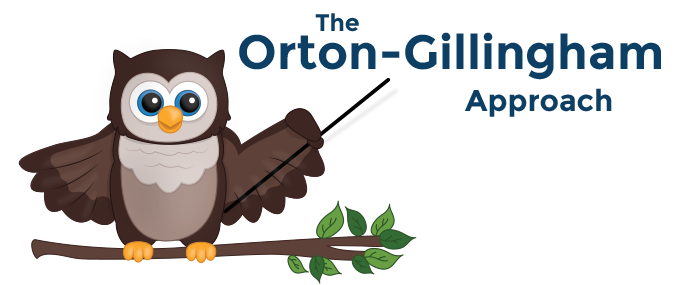
What Is Orton-Gillingham?
Orton-Gillingham is a powerful approach to teaching reading and spelling that uses instruction that is multisensory, sequential, incremental, cumulative, individualized, explicit, and phonogram-based. Though often touted primarily as an instructional method for children with dyslexia and other learning challenges, the Orton-Gillingham method helps make reading and spelling easy for all children.
The Orton-Gillingham Approach, developed by Dr. Samuel Orton and Anna Gillingham, was specifically focused on reading and spelling. It helps take the mystery out of reading and spelling by focusing on why words are spelled the way they are.
The 7 Main Principles of the Orton-Gillingham Approach
The seven elements of the Orton-Gillingham Approach of instruction are:
- Multisensory: All three learning–pathways, visual, auditory, and kinesthetic–are interwoven in every lesson.
- Sequential: Lessons are presented in a logical, well-planned sequence.
- Incremental: Each lesson builds carefully upon previous lessons, ensuring no gaps in learning.
- Cumulative: Learning is mastery-based and provides consistent review of previously taught skills.
- Individualized: Lessons are easily adaptable to each student’s strengths and allow time for respecting the student’s pace.
- Explicit: Students are taught exactly what they need to know in a clear and straightforward manner.
- Phonogram-based: Instruction is focused on teaching the phonograms that make up English words and the sounds the phonograms represent.
Application of the Orton-Gillingham Approach in Mathematics Lessons

Many people naturally ask whether this same effective approach can be applied to math, and the answer is both yes and no. This research, developed by Dr. Samuel Orton and Anna Gillingham, was specifically focused on reading and spelling. So, in that way, it doesn’t directly apply. However, decades of research have shown that almost all of the same principles are extremely beneficial when teaching math!
The Orton-Gillingham Approach helps in teaching math by applying all the aspects of it that are suitable for mathematics instruction. All About Math includes six of the seven elements of the Orton-Gillingham approach. (The only element that All About Math does not include is “Phonogram-based,” because phonograms aren’t a part of math.) That’s good news when you are looking for a program that will be easy to learn and easy to teach!
How All About Math Includes All the Important Elements of this Approach
-
All About Math is Multisensory
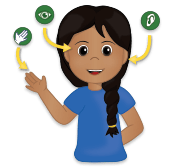
Multisensory instruction is the hallmark of the Orton-Gillingham teaching, and All About Math is especially multisensory. Every lesson includes visual, auditory, and kinesthetic learning woven together into SMI (Simultaneous Multisensory Instruction). Modern research shows clearly that when a child is taught through all three learning pathways at the same time, she will learn significantly more than when taught only through her strongest pathway.
It is not enough for a program to have some multisensory aspects; sight, hearing, and movement must be used together for the highest learning potential to be activated. All About Math does this in a way that seems so natural. For example, the lesson will direct you to explain (auditory) while you write an equation on the whiteboard (visual), and your child will use math manipulatives to represent the equation (kinesthetic).
All About Math was carefully developed to include SMI in every lesson. Doing this speeds up the learning process, aids in retention, and increases motivation, allowing your child to succeed!
-
All About Math is Sequential
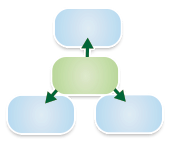
Sequential instruction means that lessons are presented in a logical, well-planned sequence. This allows connections between what a child already knows and what they are currently learning. She adds new information to the mathematical concepts she has previously learned, and her brain reorganizes to add the new information to a complex schema. When new learning is connected in the child’s mind to previous learning, long-term retention is greatly increased. See our article on How Making Connections Helps Your Child’s Memory for more information on schemas and connected learning.
All About Math’s scope and sequence was carefully planned to take advantage of these connections to allow students to progress quickly and confidently.
-
All About Math is Incremental
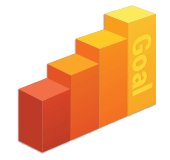
Incremental teaching ensures that there are no gaps in learning; rather, it progresses step-by-step. As an example, in All About Math Level 1, a student learns to compare groups of manipulatives to find which group has more or fewer. In time, this incrementally increases in difficulty to have the student create groups that have more or less than a given group. This builds to comparing numbers 1 to 10 directly, and in time, with many incremental steps in between, the student compares numbers from 1 to 100 using the >, <, and = symbols.
No steps are left out, and the child is never asked to make intuitive leaps. This is a no-gaps approach, just like our “No Gaps” Approach to Teaching Reading and Spelling.
-
All About Math is Cumulative

Cumulative review (e.g., reviewing everything that has come before) is essential to students’ mathematical development. All About Math includes a Daily Review Tracker. This checklist allows you to track which skills your student has been introduced to and which she has mastered. Each day, at the start of your math time, you will review one or two skills from the Daily Review Tracker with your student. This checklist will help you ensure that no skill gets overlooked. In addition, the majority of lessons include a scripted review of a specific skill or concept.
All About Math also includes progress monitoring lessons periodically throughout. Each level has five progress monitoring lessons titled “Show What You Know!” These lessons take your student through the skills learned previously to ensure she is mastering the material. Each includes a chart that tells you exactly which lesson to review for each skill your child had trouble with. These progress monitoring lessons are a wonderful resource for mastery-based learning!
-
All About Math is Individualized

Anna Gillingham’s famous quote, “Go as fast as you can, but as slow as you must,” applies as much to math as it does to reading and spelling. A curriculum that incorporates an individualized approach, sometimes called differentiated instruction, makes it easy to teach to a child’s strengths while respecting a child’s learning pace. That’s why an individualized approach is effective for all learners—beginning, struggling, average, and advanced.
All About Math is structured to make it easy to adapt the lessons to each child’s unique needs. We recommend working for just 20 minutes a day; most children will only finish a portion of a lesson in 20 minutes. The Daily Review Tracker makes it simple to track what your student has mastered and what she still needs to review. Also, each lesson (except for the few progress monitoring lessons) includes an optional “Extended Practice” activity for those students who need more practice with a skill. Even within the New Teaching, additional work is often provided for students who need it.
-
All About Math is Explicit
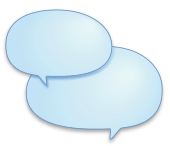
Explicit instruction means that students are taught exactly what they need to know in a clear and straightforward manner. This erases the need for guessing, intuitive leaps, and confusion. The Teacher’s Manuals are scripted so you know exactly what to say to explain a new concept, so your attention can stay on your child. No previous teaching experience or special training is needed!
In All About Math, your child will be taught directly, step-by-step, to do each new skill. The teacher presents the new concept, then works with the student through the new skill, then helps the student as needed as she works through it, and only then is the child asked to do it herself. This ensures children can perform their math work without struggles or doubts. This is so important for learners to feel empowered and confident in their abilities!
Conclusion: The elements of the Orton-Gillingham Approach are critical for mathematics
Since Dr. Orton and Anna Gillingham did not study how to teach math, there is truly no “Orton-Gillingham math” program. However, All About Math contains all the applicable core elements of instruction of the Orton-Gillingham Approach, and your child will thrive because of it!
If you want to learn more about All About Math, click here!
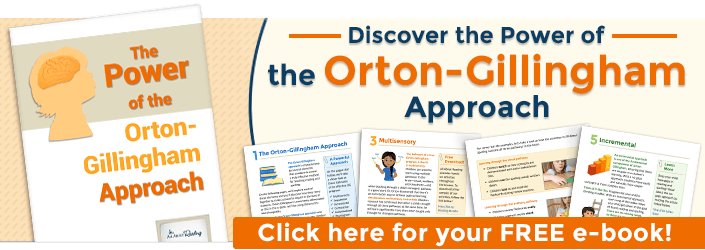














Sarah
says:I’m excited to check out the new math program!
Robin E. Williams
says: Customer ServiceThank you, Sarah! We are excited for you and everyone to check it out too!
Michelle
says:So excited to see math! Hopefully grammar will be next !
Robin E. Williams
says: Customer ServiceThank you, Michelle!
Angelita Gonzalez
says:Im excited to try it, is math 1 equivalente to kindergarten math?
Robin E. Williams
says: Customer ServiceGood question, Angelita!
All About Math Level 1 is kindergarten and part of first grade. Like all of our programs, concepts are presented in an incremental order to help develop mastery along the way. However, there is a closer correlation in All About Math to grade levels than our other programs. You may find this helpful:
AAM 1 is kindergarten and part of first grade
AAM 2 is first to second grade
AAM 3 is mainly third grade
AAM 4 is mainly fourth grade
AAM 5 is mainly fifth grade
Lea
says:This is our first year homeschooling. AAR has worked so well for my son! We haven’t found a math curriculum that works as well as AAR. I can’t wait to try AAM!
Robin E. Williams
says: Customer ServiceLea,
Love your excitement!
Charity
says:I am SO EXCITED!!! I have been telling everyone how much I wish AALP would have math! 🎉🥳👏🎊🙌
Is it just level 1 for now or are there other levels out/coming out?
Robin E. Williams
says: Customer ServiceCharity,
Great question! It is just Level 1 for now, but we are working diligently to complete the remaining levels. All About Math Level 2 will tentatively be released later this summer, with Levels 3, 4, and 5 to follow within the next year.
Stephanie Shaw
says:Any chance you are piloting the new math program? I’d love to test it out if you are! I have three boys all with dyslexia, two that struggle with math. I am not an influencer so I have nothing but feedback to offer, ha.
Robin E. Williams
says: Customer ServiceStephanie,
We don’t have any piloting planned, but I’ll keep you mind!
Theresa
says:I would love to pilot as well!
Robin E. Williams
says: Customer ServiceThank you, Theresa. But just to be clear, we have no plans for a piloting program.
Charity
says:Ooh. Keep me in mind too! Have various ages of current and future elementary level children and we have been such big fans!
Eleite
says:Excited to see more information for this, math has been so hard. I haven’t found anything that I don’t have to supplement with and all the options get overwhelming.
Robin E. Williams
says: Customer ServiceEleite,
We understand about teaching subjects that children have difficulty with.
All About Math is designed to support students with learning struggles, including those with dyscalculia. It incorporates several elements that are particularly beneficial for these learners—such as explicit instruction broken down into manageable steps, real-world connections when applicable, math tools to help organize thinking, hands-on manipulatives, and multiple opportunities for guided and independent practice. These features align with best practices for supporting students who struggle with number sense and mathematical reasoning.
Here’s a breakdown of how these methods and tools help:
– Explicit Instruction Broken Into Steps:
Allows them to focus on one concept at a time.
Makes abstract ideas more manageable and easier to follow.
Offers clear, direct modeling so students know exactly what to do and why.
– Using Real-World Connections:
Supports memory and understanding by giving context that’s meaningful and familiar.
Makes abstract concepts concrete and relatable.
– Using Math Tools
Tools like number lines, place value charts, or ten frames help students see the structure of math.
Reduces working memory demands by giving students a visual anchor.
– Manipulatives
Allows students to explore mathematical ideas physically.
Builds strong number sense through hands-on learning.
Makes connections between concrete and abstract thinking.
– Opportunities for Practice
Reinforces learning through repetition and application.
Jennifer
says:I’m sooo excited for this!!! I have wanted to use this program with all of the subjects and I’m so happy it is finally here!!
Robin E. Williams
says: Customer ServiceJennifer,
I love your excitement!!!
Jeanette
says:Interested to see how this develops!
Robin E. Williams
says: Customer ServiceThank you, Jeanette! Let me know if you have any questions.